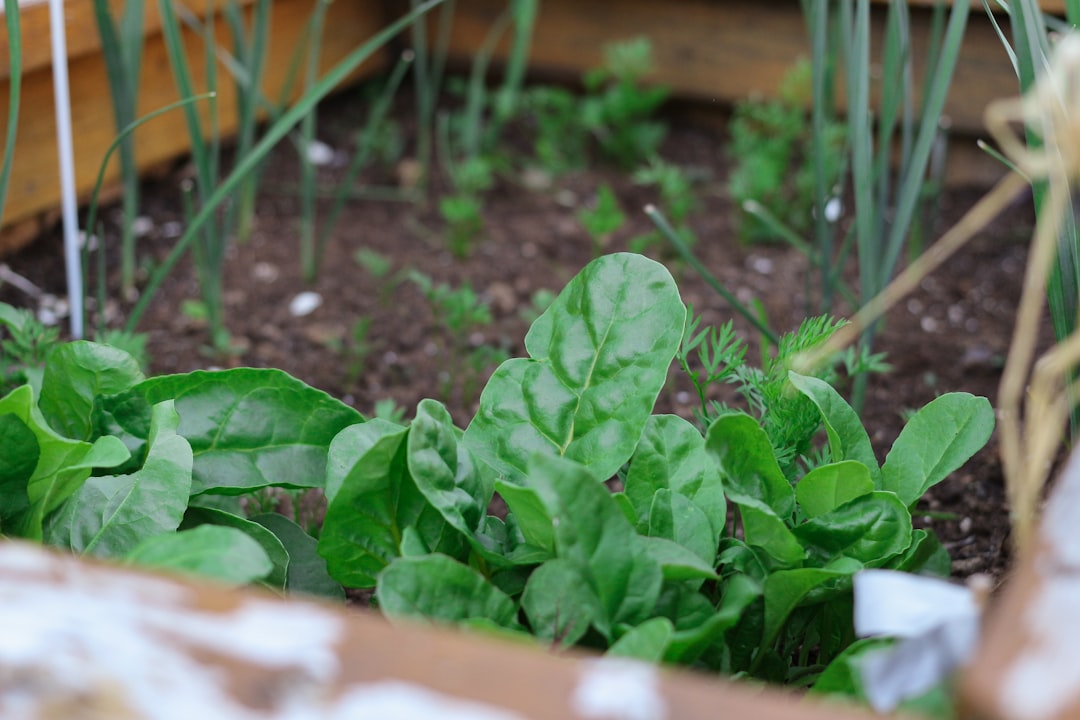 Photo from Unsplash
Photo from Unsplash
Originally Posted On: https://outdoorsdiy.com/vegetable-garden-pdf/
Vegetable gardening is a satisfying and practical pursuit that enables you to cultivate your own fresh, nutritious produce.
Whether you have a small backyard, a sunny balcony, or a spacious garden, vegetable gardening can be adapted to your available space.
In this post, we go through how you can start your vegetable garden along with a free PDF guide.
Vegetable Gardening for Beginners
Vegetable gardening, especially for beginners, offers a fulfilling and practical way to grow your own fresh and nutritious produce.
Here’s a beginner’s guide to help you get started on your vegetable gardening journey:
Selecting a Location:
Choose a sunny spot for your vegetable garden. Most vegetables thrive with at least 6 hours of direct sunlight daily. Ensure that the location has access to water.
Soil Preparation:
Test your soil to understand its composition and pH. Enhance the soil by adding compost or organic matter to improve its texture and nutrient content.
Garden Layout:
Plan the layout of your garden, considering the size and spacing of your vegetable beds or containers. Raised beds are a popular choice for better drainage and accessibility.
Choosing Vegetables:
Begin with easy-to-grow vegetables suitable for your climate and growing season. Some beginner-friendly choices include tomatoes, lettuce, radishes, and green beans.
Planting:
Follow planting instructions for each vegetable, considering factors like planting depth and spacing. Timing is crucial; some vegetables are planted in the spring, while others are suited for fall.
Watering:
Provide consistent, even watering to your vegetables. Water at the base of the plants to avoid wetting the foliage, which can lead to diseases.
Mulching:
Apply mulch around your plants to retain soil moisture, suppress weeds, and maintain consistent soil temperatures.
Fertilizing:
Use balanced or organic fertilizers to ensure your vegetables receive essential nutrients. Follow recommended application rates.
Pest and Disease Management:
Keep an eye out for common garden pests and diseases. Use organic or chemical controls as needed to protect your crops.
Support and Staking:
Some vegetables, like tomatoes and cucumbers, may require staking or trellises for support as they grow.
Harvesting:
Harvest your vegetables when they are ripe and ready. Regular harvesting encourages continued production.
Crop Rotation:
To prevent soil depletion and disease buildup, practice crop rotation by planting different vegetables in different areas each season.
Enjoy the Bounty:
The joy of vegetable gardening lies in the satisfaction of harvesting your own fresh and delicious produce. Savor the flavors and share your homegrown bounty with friends and family.
Continuous Learning:
Vegetable gardening is a continuous learning process. Experiment with new varieties, techniques, and practices to improve your gardening skills and maximize your harvests.
With patience, practice, and a little green-thumb know-how, you can experience the rewarding journey of growing your vegetables, enjoying the taste of homegrown goodness, and connecting with the natural world.
Vegetable Gardening Ideas
Vegetable gardening offers a world of possibilities, and there are countless creative ideas to make your garden not only productive but also visually appealing. Here are some vegetable gardening ideas to inspire you:
1. Vertical Gardening:
Utilize vertical space with trellises, arbors, or tall planters to grow vining vegetables like cucumbers, beans, and peas. This maximizes your growing area.
2. Container Gardening:
Grow vegetables in containers, such as pots, barrels, or even recycled items like old boots or buckets. This is ideal for small spaces and adds a decorative touch to your garden.
3. Raised Beds:
Create raised beds with wood, stone, or metal borders. They offer excellent drainage, prevent soil compaction, and make it easier to tend to your crops.
4. Square Foot Gardening:
Implement the square-foot gardening method, which divides your garden into small, manageable squares for organized planting and easy maintenance.
5. Companion Planting:
Combine vegetables, herbs, and flowers in a way that benefits each other. For instance, planting marigolds alongside tomatoes can deter pests.
6. Herb Spiral:
Construct a spiral-shaped herb garden that showcases a variety of culinary herbs while saving space and creating an eye-catching design.
7. Keyhole Garden:
Keyhole gardens are circular raised beds with a center compost basket. They conserve water and make use of kitchen scraps for composting.
8. Potager Garden:
A potager garden combines vegetables, herbs, and flowers in an aesthetically pleasing design, often with formal layouts and decorative elements.
9. Vertical Pallet Garden:
Reuse pallets to create a vertical garden. Attach pots or plants directly into the pallet’s slats, adding a rustic charm to your garden.
10. Three Sisters Garden:
Borrowing from Native American gardening traditions, plant corn, beans, and squash together in a symbiotic relationship known as the “Three Sisters.”
11. Edible Landscaping:
Blend vegetables into your ornamental landscape by incorporating them into flower beds, along pathways, or around the edges of your yard.
12. Seed Tape Art:
Create colorful and functional designs in your garden by making your seed tape art. Plant seeds along lines of biodegradable tape.
13. Greenhouse or Cold Frame:
Extend your growing season by adding a greenhouse or cold frame, allowing you to start plants earlier and grow crops later in the year.
14. Children’s Garden:
Involve kids in gardening by creating a designated children’s garden with kid-friendly vegetables and colorful signage.
15. Perennial Vegetables:
Incorporate perennial vegetables like asparagus, rhubarb, and artichokes into your garden for low-maintenance, long-term yields.
16. Moonlight or Night Garden:
Plant vegetables like moonflower, night-blooming jasmine, and evening-scented stocks that release their fragrances and display their blooms at night.
These creative vegetable gardening ideas can transform your garden into a beautiful and bountiful space that reflects your personality and interests.
Whether you have a small urban plot or a more extensive rural garden, there’s an idea that can work for you, turning your garden into a source of both sustenance and visual delight.
Vegetable Garden Layout
Creating an efficient and visually pleasing layout for your vegetable garden is essential for a successful gardening experience. Here’s a basic guide to help you plan your vegetable garden:
Begin by determining the shape and size of your garden area, considering the available space and how it fits into your landscape. It can be square, rectangular, circular, or even irregular.
Choose a sunny location for your vegetable garden that receives at least 6-8 hours of direct sunlight each day. Ensure it’s easily accessible for watering and maintenance.
Divide your garden into raised beds or rows. Raised beds offer good drainage and ease of access. Leave enough space between rows for walking and maintenance.
Create paths or walkways between garden beds to provide access and prevent soil compaction. These paths can be made of materials like mulch, gravel, or stepping stones.
Plan for crop rotation to prevent soil depletion and pest issues. Avoid planting the same family of vegetables in the same spot each year.
Incorporate companion planting strategies, where compatible plants are grown together to benefit each other. For instance, planting basil near tomatoes can deter pests.
Consider vertical elements like trellises, cages, or arches to support vining crops such as tomatoes, cucumbers, and peas. This maximizes space and productivity.
Follow the recommended spacing for each type of vegetable to prevent overcrowding, improve air circulation, and facilitate growth.
Balance functionality with aesthetics by planting flowers or herbs along the edges of your garden or in between rows for added beauty and pollinator attraction.
If space is limited, opt for raised beds or container gardening. You can arrange these in various layouts to suit your available area.
Group similar vegetables together to facilitate care and harvesting. For example, place all your tomatoes in one area and leafy greens in another.
Plan for the changing seasons by understanding your local climate. Decide which crops to grow in spring, summer, fall, and winter.
Ensure that your garden layout is accessible for weeding, watering, and harvesting without damaging plants or compacting the soil.
Set up an efficient watering system, such as soaker hoses or drip irrigation, to ensure uniform watering without wetting the foliage.
Create a garden map or layout plan on paper to visualize the arrangement of each crop. Label each bed or row for easy identification.
Don’t be afraid to experiment with different layouts and designs over the seasons to find what works best for your garden and your gardening style.
Remember that the ideal vegetable garden layout can be tailored to your specific needs, space, and preferences. Whether it’s a small raised bed, a container garden on your balcony, or a larger plot in your backyard, thoughtful planning will help you maximize productivity and enjoyment in your vegetable garden.
Vegetable Garden at Home
Creating a vegetable garden at home is a fulfilling way to relish fresh produce. To start, select a sunny spot in your garden or on your balcony, making sure it receives at least 6-8 hours of direct sunlight each day. This sunny location will enable your vegetables to thrive. It’s also essential that the spot is easily accessible for planting, watering, and harvesting.
Once you’ve chosen the location, focus on the soil. Test it to understand its composition and pH. If necessary, amend the soil with organic matter, such as compost, to enhance its texture and fertility. If your soil quality is poor or you want better control over your garden, you can opt for raised beds or use containers.
Planning the layout of your garden is the next step. Define the boundaries and decide on the arrangement of beds or containers. Adequate spacing between rows or containers should be maintained to ensure easy access for maintenance and harvesting.
When selecting the vegetables to grow, consider your local climate and growing season. If you’re new to gardening, begin with easy-to-grow varieties like tomatoes, peppers, lettuce, and radishes. Following that, follow planting instructions for each vegetable, taking into account planting depth and spacing. It’s crucial to adhere to recommended planting dates for your region.
Watering is an essential aspect of your vegetable garden. Consistency is key, as you’ll want to keep the soil consistently moist without allowing it to become waterlogged. Always water at the base of the plants to prevent wetting the foliage, which can lead to diseases.
To help retain soil moisture, suppress weeds, and maintain consistent soil temperatures, apply a layer of mulch around your plants. Fertilizing is also essential. Use organic or balanced fertilizers to ensure your plants receive the necessary nutrients, and follow the recommended application rates and schedules.
Keep a watchful eye on your garden for signs of pests and diseases, and employ organic or chemical controls as needed to protect your crops. For certain vegetables like tomatoes and cucumbers, providing support through staking or trellises may be necessary as they grow.
Harvest your vegetables when they are ripe and ready, and make it a habit to check for any garden maintenance requirements, such as weeding and soil upkeep. Most importantly, savor the satisfaction of enjoying your homegrown produce and consider this as an opportunity for continuous learning and experimentation to enhance your gardening skills.




